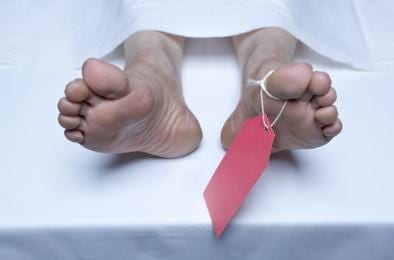Canada’s coroners are debating instituting protocols to record data on the suicides of queer and trans teenagers.
Dr Dirk Huyer, regional supervising coroner for the Guelph branch of the Office of the Chief Coroner and chair of the Pediatric Death Review Committee, says that since queer and trans youth are at greater risk of self-harm, coroners should evaluate whether issues regarding their sexual orientation or gender identity play a part in their actions.
Presently, data regarding the sexual orientation or gender identity of youth who commit suicide is not recorded. Huyer says a draft protocol is being debated by the country’s coroners but could not yet provide Xtra with a copy of the protocol.
“Once we know whether that is in fact involved in our deaths, then we can inform other experts in our area and hopefully provide better data to enhance the prevention approaches,” he says.
Corrine Davison says she would welcome the information. The instructional coach for the Ottawa-Carleton District School Board’s (OCDSB) inclusive, safe and caring program, says the school board is aware that queer and trans youth are at a greater risk for self-harm.
The OCDSB annually stages the Rainbow Youth Forum, where high school students and educators can attend a variety of workshops focused on diversity. Last year’s forum included a workshop on recognizing when someone is suicidal.
“We are responding to the issues. We’ve expanded because we realize we need to,” Davison says. “The goal is to move towards creating safer environments. Educators are becoming more aware of the signs to look for. This is a vulnerable population.”
Although the forum is only one event held once a year, the OCDSB recognizes that “we need more GLBTQ resources in our schools” every day of the year, Davison says.
The coroners proposed protocol would be beneficial to the OCDSB, Davidson says, as it would provide data that could augment their education tactics.
“Hopefully [the data from the protocol] will result in increased awareness of what the needs are for the GLBTQ population,” Davison says.
Davison is also preparing a collection of queer-positive books to send to schools throughout the region to ensure students can access more information.
“A lot of these teachers really don’t even know how to address it because they don’t even have books -and the books that they do have touch on same-sex heads of households,” Davison says. “There needed to be expanded resources.
“For teachers that are less than comfortable sharing with their language they can put these books around their rooms. And then kids can then pick up those books. For the kids that it is important to, they will find those books,” she says.
Davison says she “strongly believes” initiatives like the Rainbow Youth Forum are making a difference.
“Is there work to be done? Absolutely, because one suicide is too much,” Davison says.
Last year, representatives from service providers across the city created the Community Suicide Prevention Network (CSPN).
“The intention was that we all recognize that suicide is the second leading cause of death for those young people between the ages of 10 and 24 in Canada,” says Youth Services Bureau executive director Joanne Lowe. “Ottawa is no different.”
“There’s always an impulse to attribute the tragedy to one issue or circumstance but the reality is that suicide is very complex,” she says. “In order to prevent it and respond to it, we felt it required a more collaborative and comprehensive kind of response.”
Preventing suicides within the queer and trans community is a top priority for the CSPN, Lowe says. The network is currently working to establish a resiliency building initiative in partnership with Ottawa-area school boards specifically tailored to queer and trans youth, she says.
Based on the “Sources of Strength” model, the program will build on existing partnerships that are already in place in schools and with mental health agencies and organizations.
“What we conceived of is building on the existing trainings of teachers, parents and youth. Our hope is that that will bring a capacity to better assess suicide risk and provide support to youth in general. The training about the LGBTTQ issues is intended to promote an understanding of some of the negative impacts of homophobia on or in a school environment for all the youth in the school,” Lowe explains.
Since gay student Jamie Hubley’s suicide in Kanata in 2011, Lowe says Hubley’s family “has been very generous with their time to work with YSB and other organizations to raise awareness to promote better access to preventative mental health services, for not only LGBTTQ youth but for all youth in general.”
The CSPN has also established a research action area, or working group, which is actively reviewing the current research related to youth suicide and prevention strategies.
Lowe says the coroners protocols “might not be necessary to track this correlation [between a being queer or trans youth and self-harm] as the evidence appears to be present.”
But Lowe agrees with Davison that suicide is one too many.
“We were all very saddened [by Hubley’s death.] It’s a tragedy that touched everybody in a particular way,” Lowe says.


 Why you can trust Xtra
Why you can trust Xtra


